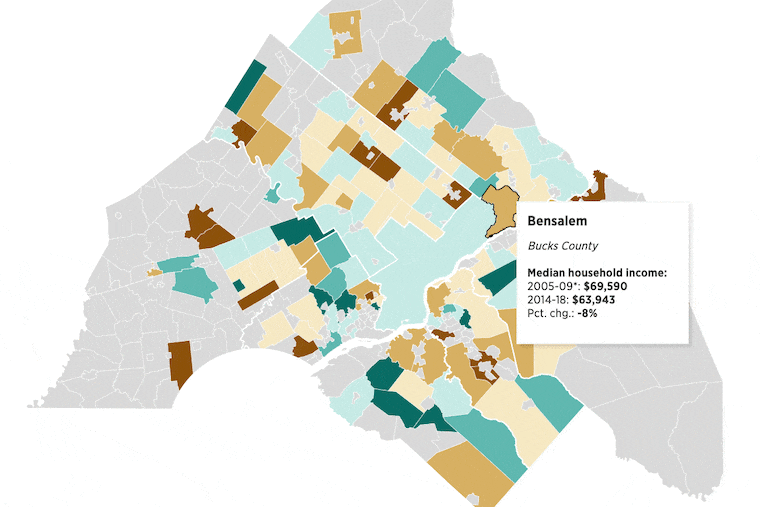Suburban Philadelphia incomes lagged for years. Now there’s COVID carnage and no cushion. | Maria Panaritis
In eight out of 10 households across battleground southeastern Pennsylvania and in South Jersey, income went down or was flat despite huge stock market gains from 2009 to 2018, an Inquirer analysis has found. People are surely suffering even worse now.
